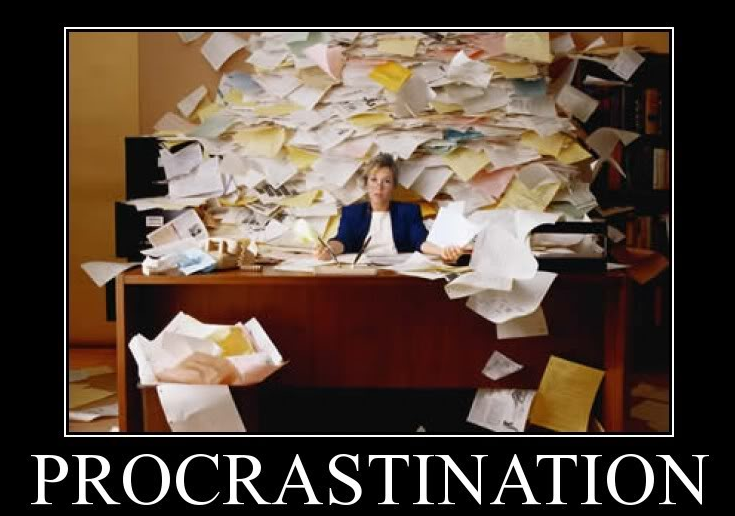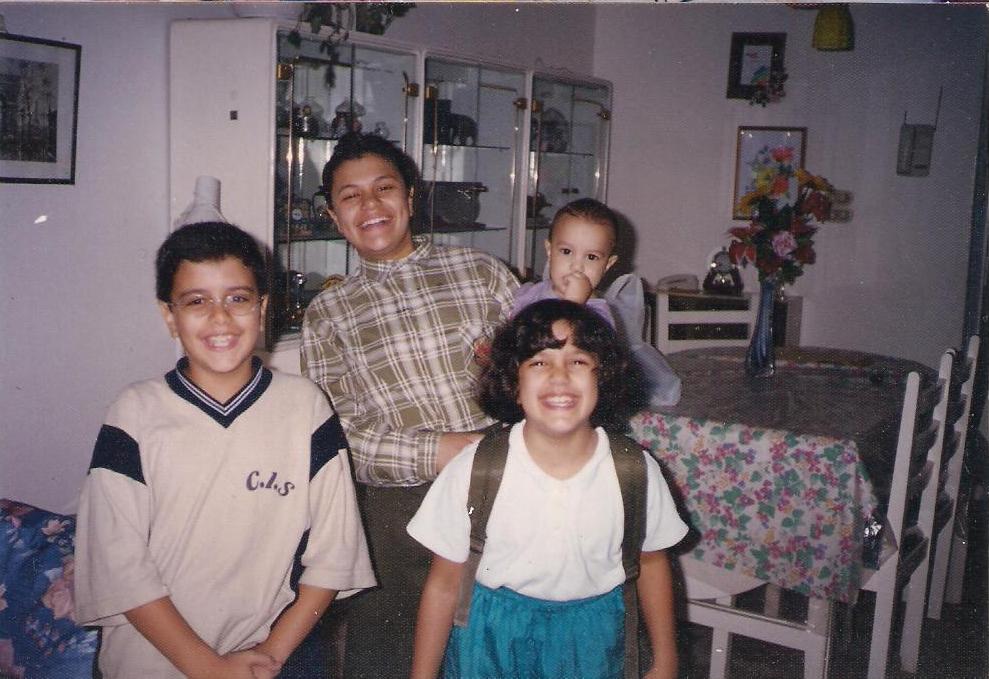Reasons for Our Procrastination Habits
For every action there is a cause — a trigger of sorts that instantly brings forth decisions and behaviors that lead to daily and lifelong consequences that many of us accept without question.
For those of us who are not aware of these triggers, life can be very difficult to manage. On the other hand, those of us who are successfully able to identify these triggers as a cause of our procrastinating habits, can indeed begin to take steps that will help us break free of these unproductive habitual cycles.
Within this section we will break down many possible intrinsic and extrinsic triggers that often encourage the habit of procrastination.
As you make your way through these triggers, progressively tick off which ones are currently leading you down the procrastination spiral.
Fear Driven Procrastinations
Our fears are in many ways seemingly uncontrollable aspects of our lives that cause us a lot of discomfort and pain.
Let’s take a look at the five most prevalent fears that tend to lead to the habits of procrastination.However, instead of breaking down these fears we will just overview them to gain a better understandingof how they relate to the habit of procrastination.
Fear of Success
Procrastination is most commonly associated with the fear of success.
When you fear success you tend to put as many roadblocks, problems and challenges ahead on your path because of your internal fear of the change that will be associated with possible success.
The fear of success naturally expands into the habits of disorganization and an overall lack of productivity. As such, if you catch yourself just keeping busy trying to get your life in order rather than focusing on the most important tasks that you must complete, then this is a clear sign of the fear of success manifesting in your behavior.
Fear of Failure
The fear of failure manifests within the behavior of perfectionism and unresourceful emotions that tend to send you down an uncontrollable spiral deeper into the habit of procrastination.
When you fear failure, you struggle with the idea of being inadequate and not living up to the high standards you set for yourself. This naturally leads to hesitancy, which either breeds inaction (due to overwhelming emotions) or promotes perfectionism where you tend to spend more time on activities than is necessary.
When you catch yourself being overwhelmed with negative emotions while in the act of overdoing the little things, then you are at that very moment in the process of manifesting the fear of failure.
Fear of Conflict
Sometimes we simply sink into the procrastination cycle because we fear the possible conflict that awaits us if we undertake the specific task or activity under question.
This conflict can be external, which involves other people, or internal being specifically related to conflicting interests fighting for power within your mind. Either one may well stop you in your tracks and lead you down the spiral of procrastination.
Fear of Judgment
Related to the fear of conflict is the fear of judgment.
Here you procrastinate because you worry about what other people might think of you, your behaviors, decisions or actions.
If you catch yourself thinking more about what others think, rather than actually undertaking the task at hand, then you are manifesting the fear of judgment.
Fear of the Unknown
This fear is intrinsically connected to all the above mentioned fears.
What all the above fears have in common has very much to do with the unknown.
Not knowing what will eventuate from our daily decisions and actions tomorrow, or within the next moment, has a tendency to hold people back from taking the necessary steps that will move them forward towards the attainment of their goals and objectives.
When we suffer from a fear of the unknown, we tend to be very hesitant in our approach and with our actions. In many instances we will attempt every strategy in the book to try and distract ourselves from the task at hand. Often our unconscious goal is to gain certainty within the moment (which is accomplished through small irrelevant comfort seeking activities) in order to counter the uncertainty of the next moment.
Action Driven Procrastinations
Some forms of procrastination are driven and evolve through action.
If we first come to understand, and later learn to undertake these actions from an alternative angle and perspective, then this will help us to successfully penetrate the procrastination cycle that dominates our current behaviors.
Let’s take a look at some of these actions in a little more detail.
Seeking Perfectionism and Micromanaging
Perfectionism involves the process of meticulous irrelevant actions that will not make a significant difference to the end goal.
In many ways perfectionism is a disease of the mind similar to how a person suffering from anorexia sees themselves in front of a mirror. This person looks into a mirror and labels themselves as being overweight. They therefore starve themselves in order to lose the extra pounds they see bulging out from their waistline. However, as we know this is only an illusion of their mind. And the same is true of perfectionism.
A person who seeks perfectionism is never quite satisfied that anything they do is ever good or adequate enough to be fully implemented. They will redo the same activity or task over and over again in an attempt to attain perfection. Yet, they completely don’t realize that perfectionism is actually in the eyes of the beholder. What may indeed seem quite imperfect for them, may in fact be ideal for someone else.
Finally, when it comes to perfectionism, it’s helpful to understand that 20% of our activities will often produce 80% of our results. For more information, please see the Pareto Principle.
Over Planning
Here you overwhelm yourself with planning how to do things instead of simply doing them.
There is no doubt that planning is a very important aspect of goal setting and achievement. However, if all you are doing is planning, then you must realize that it is a deadly form of procrastination that will subtly push your goals and objectives out of reach.
Ideally you should schedule a time and place where you will plan out a specific list of steps and actions you will take. After your plan has been laid out, you must not look back but rather look forward concentrating on the process of your daily tasks and activities. It is actually the act of looking back at your plans again and again, that stifles motivation and manifests procrastination.
Overworking
Sometimes procrastination can get a hold of us simply because we overwork ourselves.
Our bodies are biological mechanisms that are programmed and conditioned with set limitations. When we overwork we deplete our resources and thusly experience a period of withdrawal where no matter what we do, we simply fail to unleash the motivation we need to continue pursuing our goals and objectives.
The key here is to schedule regular breaks throughout the day.
Habit Driven Procrastinations
Our procrastinations can also form ritualistic habits of behavior that tend to go unnoticed as their patterns are so very deeply ingrained into our psyche.
These self-sabotaging habits can lead to uncontrollable spirals of procrastination that are difficult to understand because the behavior causing these actions is hidden away within the recesses of our unconscious mind.
There are many habits that can trigger this unresourceful state, however for the purpose of this discussion, let’s just take a look at three of the most common habits of procrastination.
The Impossible Expectations
Our expectations manifest the possibilities that we allow to settle and grow within our life experience.
Our expectations are like barometers that determine where we will be tomorrow, next week, next month, and so forth.
Many of us have a habit of setting the expectation bar so high up into the stratosphere that we simply have no hope of ever living up to these expectations. This tends to lead us down a spiral of deflating emotional experiences that settle down to earth as procrastinating habits that pull us in the opposite direction from our end goal and objective.
Guilt Driven Self-Talk and Criticism
The language we use is intrinsically connected to our emotional patterns of behavior, which are likewise intrinsically connected to our emotions and thusly manifest in the actions we partake-in on a daily basis.
Some of us have a habit of regularly talking ourselves into a state of procrastination through guilt driven self-talk and criticism that deflates our motivation and leads to deep feelings of inadequacy. Within this state, we simply fail to find the answers that we need in order to help us work through the procrastination cycle in an effective and efficient way.
Low Self-Esteem
The guilt driven self-talk and criticism naturally leads to regular habitual bouts of low self-esteem. Living within this state is one of life’s greatest challenges, where everything becomes an arduous chore and an uphill battle that never seems to end. All of this cycles down through to procrastination, and may even lead to far more severe repercussions such as depression.
Feeling Driven Procrastinations
Due to the changing events and circumstances of our lives, at times procrastination is triggered as a result of deep emotional experiences that we tend to slip into throughout our day. Many of these feelings are brought about by common challenges we face that we simply fail to manage in an effective and efficient way. Unable to control these external events, we naturally experience common emotions that dig us deeper into the depths of procrastination.
Feelings of Overwhelm
When we tackle too many tasks or chunks of information at one time, then this can naturally trigger feelings of overwhelm. As this feeling begins to take control, we are naturally tempted to remove ourselves from the overwhelming tasks or activities under question. This leads to ongoing bouts of procrastination that will continue until we learn to manage, organize and arrange the tasks and information that initially triggered this state.
Feelings of Inadequacy
We feel inadequate when we find ourselves incapable of dealing with the challenges, problems and obstacles that life throws our way. This may lead to bouts of procrastination that focus us on insignificant keeping busy tasks and activities, or may even dishearten us altogether from our goals and objectives.
Feelings of Frustration
We become frustrated when confronted with tasks and challenges we believe are within our capabilities, yet we struggle to manage them effectively. As a result we manifest the feeling of frustration within our psyche.
As an isolated state, frustration is a good place to be, as long as we don’t allow it to get the better of us. The moment it spirals out of control, is the moment our frustrations can manifest into fears of failure that can ravage our actions in indescribable ways.
Feelings of Boredom
The final state-of-being that regularly leads to bouts of procrastination, is boredom.
We tend to procrastinate when we are bored. This is essentially triggered when we undertake easy repetitive tasks and activities for extended periods of time.
To overcome this spiral, we simply need to think creatively and spice up our activities by adding a little more intellectual and emotional stimulation. When things are fun, they always get done!
Procrastination Triggered through Lack
Some forms of procrastination come about because we simply lack something specific in our lives.
These items we lack can be very simple things that we take for granted, or they can in fact be linked to deeper psychological tendencies that we must learn to control and work through in an effective and efficient way.
Lack of Focus
We tend to procrastinate because of a lack of focus and attention. This comes about when we focus on too many things at once, when there are a myriad of distractions drawing our attentions away, and when our goals and objectives haven’t been clearly defined.
Lack of Confidence
We tend to procrastinate because of a lack of confidence in ourselves, our abilities, skills, knowledge, experience, or simply through a lack of confidence with bringing the task to fruition. Yet, confidence is essentially a state-of-mind.
Identify the areas that you are not feeling confident about, and draw up a plan of action to build confidence within these aspects of your life.
Lack of Adequate Resources
We tend to procrastinate because of a lack of adequate resources that will help us to complete the task at hand.
If you find yourself procrastinating because of a lack of resources, then simply spend some time going out into the world and collecting the resources you require to get the task completed successfully. Whether this means tools, skills, support from other people, or maybe gaining further experience in a specific area. Simply go out there and bring back what you need in order to fulfill the promise of your tasks and objectives.
Lack of Purpose and Direction
We tend to procrastinate because of a lack of purpose and direction: aka, no personal legend.
When we have no specific direction, we struggle to find our way, and we also tend to focus our time on irrelevant activities that provide us with very minimalistic results. This can lead to periods of busynessthat waste our precious energy on procrastinating activities that have no real purpose or value.
Unfulfilling Life Experiences and Circumstances
When we are unfulfilled with certain aspects of our lives, this can naturally lead to uncharacteristic self-sabotaging behaviors that lead us down the procrastination spiral.
Being unfulfilled in our relationships, with our career’s, or just with life in general can distract us from many actions that would further our success in these areas.
If you are finding yourself overwhelmed with feelings of dissatisfaction in any specific area of your life, then you must begin focusing on finding happiness and fulfillment within this area, or remove yourself mentally from these experiences and focus on the tasks at hand.
Childhood Programming
Finally, procrastination can also evolve through a set of interlinking childhood experiences that we naturally accepted into our psyche at an age and time when we knew no better. This very much involves unconscious experiences that we struggle with on a constant basis throughout our lives.
Creating Unstoppable Motivation
Like procrastination, motivation is likewise triggered through a specific means and process that can help you to break out of unproductive states and into a new cycle of momentum that will assist you to move forward towards the attainment of your goals and objectives.
Within this section we will attempt to thoroughly piece together the intrinsic and extrinsic triggers of motivation. Moreover, we will identify how you can put these theories of motivation to use immediately to help you break out of your procrastination cycle.
Motivational Types
There are essentially two types of motivation that can inspire us into proactive action. It is important to get a thorough understanding of these two types of motivation in order to fully grasp the motivational strategies presented further down this post.
Let’s now take a look at each of them in a little more detail.
Intrinsic Motivation
This is a state of motivation that is internally generated stemming from either personal enjoyment or from a sense of obligation. You motivate yourself intrinsically by finding personal benefit, enjoyment or significance within the task or activity you are undertaking.
Extrinsic Motivation
This is a state of motivation that is externally generated stemming from objects, other people and the environment. You become motivated extrinsically when your task or activity benefits others, results in material possessions or favored circumstances.
Reward Created Motivation
Over the past hundred years, psychological studies have shown us time and again that rewards used as tools for reinforcing resourceful behaviors, do indeed help to build high levels of motivation (this is not true in all cases when creative tasks are undertaken).
The rewards must however be consistently reinforced and within close proximity to the action you are rewarding.
So how does this apply to long-term motivation?
It basically means that you must create a process that will reward you — consistently and persistently — as you attain specific tasks and objectives along your journey towards your goals.
Goal Created Motivation
Smart goal setting is a critical and indispensable component of our lives that is absolutely necessary if you seek to build high levels of motivation that will propel you forward towards the attainment of your objectives.
Your goals must be specific, measurable, moderate in difficulty, close in time, and you must work on attaining them by taking small, consistent and steady steps.
‘Human Need’ Created Motivation
Our human needs are essentially deeply ingrained psychological aspects of our lives that we seek to satisfy and fulfill as we go about our daily decisions and actions.
When our actions fulfill each of these human needs, then we naturally feel more motivated and inspired. On the other hand, when these human needs are left unfulfilled by our daily actions and behaviors, then we simply struggle to find the motivation we need to get us through our days. Moreover, it can lead us down the spiral of procrastination and low self-esteem.
Let’s break down each of these human needs in a little detail to help you incorporate them into your life and enhance your levels of motivation.
As you are reading through this section, keep in mind that in order to instill high levels of motivation, you must integrate as many of the human needs as possible into each and every one of your tasks and activities.
Satisfying the Need for Certainty
When we are certain about our outcome, we naturally find the motivation to persist despite the obstacles and challenges that may stand in our way.
Because our objective is within our reach, this provides us with a sense of confidence that all will be well in the end.
In order to instill this feeling of certainty, you must work on clarifying your goals and objectives, and build upon your weaknesses, skills and resources to help you gain a greater sense of confidence while undertaking the task at hand.
Does the task or activity you are procrastinating about provide you with a sense of certainty?
If not, then you must find ways to instill a sense of certainty into the goal or objective you are working towards, otherwise fear might overwhelm you.
Satisfying the Need for Uncertainty
When we are somewhat uncertain about our outcome, this naturally creates intrigue, excitement and motivation to persist despite the obstacles and challenges that may stand in our way.
This is in some ways contradictory to the first human need, however a deeper analysis reveals that we do indeed require some uncertainty within each of our actions, otherwise boredom can ensue, which is a natural trigger for procrastination.
In order to instill this feeling of uncertainty, you must work on spicing up your task or activity in unexpected ways that will bring a sense of excitement into your everyday actions.
Does the task or activity you are procrastinating about provide you with a sense of uncertainty and excitement?
If not, then you must find ways to instill a sense of uncertainty into the goal or objective you are working towards, otherwise boredom might overwhelm you.
Satisfying the Need for Connection
When we have an intrinsic connection with our outcome, this naturally builds upon our levels of motivation despite the obstacles and challenges that may stand in our way.
Connecting to your outcome means finding a meaning and purpose behind every step and action you take.
In order to instill this feeling of connection, you must build on your why reasons for attaining your end goals and objectives. The more whys you create, the greater sense of connection and motivation you will build around this task or activity.
Does the task or activity you are procrastinating about provide you with a sense of connection?
If not, then you must find ways to instill a sense of connection into the goal or objective you are working towards, otherwise your disconnected feelings and emotions will lead to a lack of focus and direction.
Satisfying the Need for Significance
When we feel that our outcome is significant and important to us, then this naturally builds upon our levels of motivation despite the obstacles and challenges that may stand in our way.
In order to build significance you must have a driving purpose, goal, vision and objective behind every task and activity that naturally makes you feel important and proud.
The bigger the objective and vision, and the more significant and important it makes you feel, the deeper the levels of motivation and passion you are likely to experience.
Does the task or activity you are procrastinating about provide you with a sense of significance?
If not, then you must find ways to instill a sense of significance into the goal and objective you are working towards, otherwise procrastinating feelings of inadequacy might overwhelm you.
Satisfying the Need for Growth
When we feel that our outcome provides us with a sense of growth, then this naturally builds upon our levels of motivation despite the obstacles and challenges that may stand in our way.
In order to build a sense of growth you must commit yourself towards looking at your current tasks and objectives from a long-term perspective.
You must essentially gather every learning experience you can from even the most mundane tasks, then projecting into the future to see how you will be able to utilize this new found experience and information to further your long-term goals and objectives. This might be difficult at first, however if you focus, you will indeed find significant learning experiences and growth opportunities within every single activity you undertake.
Does the task or activity you are procrastinating about provide you with a sense of growth?
If not, then you must find ways to instill a sense of growth into the goal or objective you are working towards, otherwise you may completely lose focus of the bigger picture and objective, which could very well lead to distractions and procrastinating actions.
Satisfying the Need for Contribution
When we feel that our outcome leads to a sense of contribution to others and the world around us, then this naturally builds upon our levels of motivation despite the obstacles and challenges that may stand in our way.
In order to build a sense of contribution you must extend your perspective and peripheral vision outwards and into the external world beyond your self. Here you must ascertain how this specific task or activity benefits others and the world around you in immeasurable ways. This may be difficult to perceive as you are undertaking seemingly small and insignificant tasks. However, with a little effort, even seemingly insignificant events or actions affect the world in unexpected ways. This theory is known as The Butterfly Effect.
Does the task or activity you are procrastinating about provide you with a sense of contribution?
If not, then you must find ways to instill a sense of contribution into the goal or objective you are working towards, otherwise the habit of procrastination may overwhelm you.
Satisfying the Need for Fun
When we feel that our outcome leads to a sense of fun and laughter, then this naturally builds upon our levels of motivation despite the obstacles and challenges that may stand in our way.
In order to build a sense of fun and laughter, simply brainstorm ideas on how to instill a little more entertainment into your tasks and activities. This is in someways related to the need for uncertainty.
Does the task or activity you are procrastinating about provide you with a sense of fun?
If not, then you must find ways to instill a sense of fun into the goal or objective you are working towards, otherwise boredom may lead you down the spiral of procrastination.
Satisfying the Need for Freedom
When we feel that our outcome leads to a sense of freedom, then this naturally builds upon our levels of motivation despite the obstacles and challenges that may stand in our way.
In order to build a sense of freedom, you mustn’t allow yourself to get too absorbed or overwhelmed by your daily tasks and activities. Otherwise your sense of freedom will dissipate and you will suffer the consequences of procrastination.
You must focus on scheduling regular breaks and learning new skills that will help you to better manage your time, tasks and activities.
Does the task or activity you are procrastinating about provide you with a sense of freedom?
If not, then you must find ways to instill a sense of freedom into the goal or objective you are working towards, otherwise the feelings of overwhelm, anxiety, frustration and stress will chain you up like a prisoner to the habit of procrastination.
Satisfying the Need for Power
The need for power is very closely tied with the need for significance and doesn’t require further explanation.
The Conflicting Interests of the Mind
The conflicting interests of our conscious brain and unconscious mind can in many instances create contradictory motivations for our behaviors. This can likewise send us down the spiral of procrastination at one moment, and up the elevator of motivation the very next moment.
These conflicts have to do with how our mind has been conditioned to think and deal with events and circumstances over time.
Step-by-Step to Instant Motivation
Having already identified how motivation is triggered, let’s now take a closer look at the motivation process, and how you can best put it to use to help you break out of your procrastinating habits of thinking and behaving.
This section will provide you with a step-by-step guided tour of a tried and tested process that will help you take control of your thoughts, decisions, actions and behaviors, thusly helping to inspire a sense of motivation and purpose that will drive you forward towards the attainment of your goals and objectives.
Analysis Stage
The primary purpose of this stage centers around identifying the psychological and real world triggers that send you down the spiral of procrastination or up the elevator of motivation.
This stage essentially boils down to the process of creating a thorough time-log that will help you to grasp a complete understanding of your habitual patterns of behavior.
Create a Time-log
Your time-log should consist of an analysis of four key variables that you must initially measure over a period of a week.
The first is self-explanatory, as it simply requires you to keep track of the activities you undertake every 15 minutes throughout your day.
Secondly, beside each activity you should be identifying the strength of your energy resources. This simply means indicating with a high, moderate or low label, how much energy you are feeling at every moment of your day.
Thirdly, pay attention to any procrastination triggers or periods of the day when you found it difficult to motivate yourself. Once you have identified them, jot them down on your time-log.
Finally, do the same for your motivation triggers. These could simply be random feelings, people, actions or events that provided you with the rush of energy you needed to inspire your behaviors.
Once you have compiled your weekly time-log report, spend some time analyzing the data and identify the habitual patterns of behavior that lead to the time specific actions you took. You should then utilize the results of this analysis to help you move through the remaining steps of the motivational process.
Thinking Stage
Initially as you are working your way through the procrastination cycle, it is important to give this stage its due time, diligence and effort.
Long-term, as you become a more proficient thinker you can move through this stage far more rapidly. However, if you are doing this for the first time it is critical that you undertake each step of this process as it is presented below.
Every sub-stage works and builds upon the sub-stages before it to help present you with a thorough and comprehensive process that will strengthen your levels of motivation.
Set Goals on Paper
Setting motivating and inspiring goals that are written out on paper, is one of the key fundamental processes that will help you to build lasting long-term motivation.
The process of goal setting involves some specific principles that one should follow in order to trigger deep states of passion and momentum.
Visualize Goals
Visualization brings forth the power of our imaginations in extraordinary ways that can trigger deep levels of motivation, thusly helping you to muster the momentum you need to propel you forward towards the attainment of your goals and objectives.
Psychological studies have consistently shown us that the human brain cannot tell the difference between an object that is visualized within the mind when compared to an object that is physically seen within the real world.
By simply visualizing your outcome in advance, you will essentially be planting the seeds of lasting motivation within your psyche, before you even take a single physical step into that direction.
Do Not Rationalize
While progressively moving through the thinking stage it is important that you hold back from rationalizing or thinking in unproductive ways that naturally place roadblocks along your path towards your objectives.
We tend to procrastinate on many tasks and activities simply because our rationalizing tends to get the better of us.
We must come to understand that the excuses we make on a consistent basis are in actuality irrational projections of our mind that have no place within the physical world. Just let them go, and project forward onto the things you want.
Here are a few examples of someone’s irrational thoughts and projections that lead them towards the habit of procrastination:
It’s not that important right now…
Do I really need this anyway?
I don’t know what to do…
I’m just simply too tired right now…
It’s too difficult because…
It takes too long because…
I will do it tomorrow because…
Ask Effective Questions
Ask effective questions focused on solutions, benefits and proactive actions that will help to clarify your goal, tasks, activities and objectives.
Questions are essentially beacons allowing you to direct your mind in ways that will promote deeper and longer lasting levels of motivation.
Look at your solution focused questions as a food source that helps you to maintain peak levels of motivation.
If you continuously ask solution focused questions, they will inspire and move you forward towards the attainment of your goals and objectives. If on the other hand, you ask questions focused on procrastination and problems, then this will likewise deplete you of your reservoirs of motivation.
Gain Leverage through Pleasure and Pain
The pleasure and pain principle behind motivation will help you to gain the leverage that will propel you forward and beyond your habits of procrastination. In fact did you know that pleasure and painactually determines how you conduct yourself each and every day of your life?
We essentially take action because of the short or long-term pleasure that this action might potentially bring into our experience. On the other hand, we act or refrain from acting due to the short or long-term pain that we associate to an experience.
For the purpose of motivation, you have to find ways to associate pleasure and gains to the actions that you know you must take in order to move you forward in life, and associate a great deal of pain and loss to the habit of procrastination. This essentially all boils down to asking the right kinds of questions and then visualizing the potential outcomes associated with these experiences.
Preparation Stage
Unless you prepare yourself adequately for the actions you are about to take, then you may suffer from indecision, which could trigger states of procrastination and deflated motivation.
Before any action is taken, make sure you have the necessary tools, skills, support and resources that are required to get the job done. These are important as they will help you to build long-term confidence by preparing you for the possible obstacles and challenges that may lie on the journey you are about to take.
Your Tools
Sometimes we procrastinate because we simply haven’t taken the time to prepare the tools we need in order to effectively deal with the task at hand.
Project yourself forward and figure out exactly what type of tools you will need in order to ensure that you keep the momentum going once you begin working on the task at hand.
By tools, I essentially mean physical objects that will assist and motivate you to get the task done in quick succession without a single thought of procrastination crossing your mind.
Your Skills
Sometimes we procrastinate because we simply have not taken the time to learn or acquire the skills we need in order to effectively deal with the task at hand.
If you suffer from uncertainty, a simple lack of confidence, or low self-esteem, then this could possibly mean that you are lacking some type of skill that could essentially help you to work through this task in a more effective and efficient way.
Take some time and break down the task that you are procrastinating on. Ask yourself what type of skills you may need to develop within yourself in order to help you gain a little more confidence.
Once you have identified what is required, go out there and spend a little time building up your skill levels. However, please understand that you do not have to become an expert in any specific area before returning back to your task. All that may be required is a little knowledge and experience, and this will effectively help you to gain the confidence and belief, in your ability to break out of the procrastination cycle.
Your Support Network
Sometimes we procrastinate because we simply do not have an adequate support network that will help us to stay motivated over the long-term.
If you take the time to create a strong and reliable support network of people, communities, family and friends, then you can utilize them in times of need when you require a little motivation and direction.
We all tend to lose focus and get distracted from our goals and objectives at times. Throughout these periods, if we simply do not have a strong and reliable support network behind us, then periods of procrastination may get the better of us.
During this stage of the motivational process, you must identify the types of people you need within your circle of influence to help you get through your tasks successfully. Identify those who are strong where you are weak, or those who have knowledge about areas that are unfamiliar to you, and garner their help with things you are struggling with.
Sometimes it could be as simple as having an accountability partner who just keeps reminding you about the reasons why this goal or task is important and necessary for your ongoing happiness and fulfillment. At other times, all you may need is a sounding-board: someone who can listen and provide you with a different-line of thinking and perspective that will open your eyes to new experiences and understandings. This is where Life Coaches come into the picture.
Other Resources Required
Finally, identify any other resources you might need that will help you to move from procrastination and into lasting motivation.
Motivation Stage
You must utilize the myriad of tools, techniques and strategies discussed throughout this post to motivate yourself during this stage of the motivational process.
Action without motivation is fruitless and will be quite ineffective with helping you build the momentum you seek to reach your goals and objectives in quick succession.
Think of your action as a bowling ball. Without motivation you will be unable to provide it with the force it needs to knock down the tenpins. However, with enough motivation behind your actions, it will have the necessary momentum, focus and force to knock down the tenpins on the very first try.
Action Stage
The final stage requires you to take action and move forward towards achieving your laid out plans and objectives.
On the surface, this process seems pretty straightforward, however having been a procrastinator myself, it is easy to fall prey to inaction if we go about our daily tasks, responsibilities and goals in an inappropriate way.
The following seven suggestions will hopefully provide you with the groundwork and understanding you need to assist you with moving through the action stage without a second thought about procrastination.
Imperfect Actions
Your actions must be imperfect. This may be very difficult for someone whose self-concept is built upon perfectionism, however if you seek to break out of the procrastination cycle then you must be less thorough and approach each situation in an imperfect way.
Being imperfect doesn’t mean being careless. It rather means being thorough with your planning and actions to the extent that it doesn’t interfere with the achievement of the task or goal you initially laid out on paper.
If you ever find yourself nitpicking on silly little things that others simply will not notice, then you are at that moment sinking into perfectionism, which is of course a form of procrastination.
Small Chunks
Your actions must be undertaken in small chunks.
In so many instances we fall into the procrastination trap because we become overwhelmed with the task at hand. The main reason for this feeling of overwhelm is because we feel incapable of managing the task in an effective way that provides us with a sense of control and confidence.
In order to overcome overwhelm, make sure that you break down the large goals, tasks, or actions into small manageable chunks that you can tackle one fragment at a time.
Passionate Disposition
Your actions must be colored with a passionate disposition. This means that you must find ways to become enthusiastic and excited about the task you are undertaking. This may require a little effort and creativity, however it will go a long way towards helping you build your reservoirs of motivation.
Process Orientation
Your actions must be process oriented.
On many occasions we focus so thoroughly and completely on the end goal or objective, that we neglect our daily tasks and responsibilities. This is another form of procrastination that will eat at us in unexpected ways.
Having big and exciting goals is very important and goes a long way towards building our levels of motivation. However, some of us have a tendency to become a little too focused on the big picture, and we therefore neglect the small daily ritualistic tasks that will help us to attain this end objective.
It is important that you do not lose yourself in your own mind, and that you focus yourself on the present moment and on the tasks at hand that will help you to obtain the larger goals and objectives you have laid out for yourself.
A Commitment to Enjoyment
This is all about having as much fun as possible.
When you thoroughly enjoy the tasks you are working on, time flies by and you become incredibly productive and efficient in your actions. Therefore it is important to always take time to brainstorm ideas on how to make your journey towards your bigger goals and objectives as fun and enjoyable as possible.
Hardest Task First
Many times we procrastinate on difficult tasks, and just keep putting them off over and over again.
When you get to the action stage, you must commit yourself towards tackling the hardest and most difficult tasks on your agenda first. By doing this, you will effectively free your mind from the garbage that this task will throw your way if you try and ignore it.
A difficult or arduous task that we procrastinate on weighs heavily on our thoughts and levels of energy. The longer you allow these tasks to dwell on your mind, the less productive you will become and the more likely you are to fall into the trap of procrastination — likely sabotaging other tasks in the process.
The key is to clear the garbage as soon as possible before it stinks up your whole mind and infects every other task with its foul smell.
11 Minute Rule of Productivity
If all else fails, then apply the 11 minute rule of productivity.
Many times we just can’t seem to find the motivation to simply begin a task or activity. This is probably in essence the most arduous and difficult step to take. However, once we begin, we soon find that we start to move into the flow of the activity; our thinking improves and our motivation levels soar.
Decide today that you will allow yourself 11 minute chunks of time to begin the activity you have been procrastinating on. Simply set the alarm clock for 11 minutes and absorb yourself within your task or activity fully and completely without distracting your mind with other matters. When your alarm clock sounds, simply turn it off and walk away from the task. Take a short break of 11 minutes, and then return to the task for another 11 minute cycle, and so forth.
As you work your way through this process you may find that your motivation levels suddenly begin to soar, and this will entice you to stick with your task or activity for longer then the allocated 11 minutes, which is what you want.
Another interesting psychological event that occurs throughout this process, is that during the 11 minute break, your unconscious mind actually goes to work searching for solutions and answers to help you accomplish this task successfully. This is the main reason why your motivation levels will begin to soar to higher peaks each time you cycle through the 11 minute rule. Try it, and you may be pleasantly surprised with the results.
Motivational Maintenance Strategies
Our motivations are very fragile things, that can easily change with the tides and be taken away by the unpredictable winds that life blows in our direction. Given this, it is important to understand that unless we work on building and growing our skills as a self-motivator over the long-term, that we will simply struggle to stay within this resourceful and productive state when unexpected challenges and setbacks arise.
Within this section we will briefly touch on some of the key strategies, tools, skills and characteristics that you must cultivate within yourself in order to stay motivated when the chips are down. For more strategies, please see unstoppable motivation.
Develop a Set of Simplified Life Skills
In order to keep your motivation levels high at all times, it helps to master a set of life-simplification skills that will allow you to manage your daily tasks and actions more effectively.
These skills will not only improve your efficiency, but will also help to remove boredom, overwhelm and low self-esteem. They will likewise improve your focus, confidence and direction, while providing you with the tools and resources you need to effectively break through the persisting cycles of procrastination that can at times creep back into our lives.
Time Management
Time management will assist you to better manage the tasks and activities related to your goals and objectives.
When you feel in control of your time, your motivation levels naturally soar and create the momentum you need to effectively deal with the challenges and obstacles that stand in your way.
The skill of time management will also help you to counter the effects of stress, worry, anxiety, overwhelm and frustration, which all lead to different forms of procrastination.
Organization and Systemization
These two skills are natural outcroppings of time management. They involve taking the time to organize, arrange, simplify, and systemize your tasks, activities, resources, tools and networks of support in such a way that will boost your motivation and productivity.
When you design your work and study environment in such a way that will assist you to become more efficient and effective in your daily actions, then you will naturally find that your confidence levels begin to grow, and this likewise leads to a sense of satisfaction and fulfillment that brings forth higher levels of motivation.
Given this, take some time today to learn a little more about methods and strategies you could use to organize and systematize your environment that will naturally enhance your levels of motivation.
Cultivate Motivational Characteristics
It is important to cultivate the following five key characteristics into your psyche and daily actions if you seek to grow and expand your levels of motivation beyond their current levels.
Enthusiasm
It is very difficult to procrastinate when you are enthusiastic about the task or activity you are undertaking. Enthusiasm is naturally built upon the foundations presented within this post.
How can you instill a sense of enthusiasm into your activities?
Discipline
When you are disciplined and committed to the task at hand, you naturally create an aura of importance around this activity, which essentially leads to higher levels of motivation.
In what ways can you raise your levels of discipline and commitment?
Determination
Determination is the biological child of enthusiasm and discipline.
When you are determined to complete a task no matter what obstacles or challenges stand in your way, then you naturally instill the emotion of motivation into your psyche. Your determination unleashes a never quit attitude that creates unstoppable momentum as you move forward towards the achievement of your goals and objectives.
To instill determination into your daily actions, you must establish high importance goals that move you emotionally, mentally, spiritually and physically. The more reasons you create in your mind for attaining these goals, the higher the level of determination you will cultivate within your psyche.
How many ways can you find to dramatically enhance your levels of determination?
Responsibility
When we take full responsibility for our daily life decisions and actions, we naturally instill a deep connection with the tasks we are working on. We no longer blame outside circumstances, people or events, and we no longer make excuses or feel sorry for ourselves. Instead, we bring forth a quiet controlled intentional focus and motivation, that naturally permeates all our tasks and activities with a sense of purpose and confidence that our outcomes rest completely and securely within our hands.
Responsibility is the key, and it will set you free from the cycles of procrastination.
How will you begin taking full responsibility for all your tasks and activities?
Optimism
Without optimism there can be no motivation.
Have you heard of anyone being moved and motivated by their pessimistic words or perspectives?
Optimism is the key to lifelong motivation that will help you to move mountains and part the oceans. It is an absolutely essential component that supports all other characteristics of motivation, and builds upon all the qualities, techniques and strategies discussed within this post.
Reward Your Accomplishments
As previously discussed, rewards make up one of the essential components that go into creating unstoppable motivation.
In order to encourage ongoing long-term motivation, you must take some time to put a rewards system in place, that will shower you with consistent little pleasures as you step closer towards the attainment of yourgoals and objectives.
Schedule Days Off
Finally, in order to keep your motivation levels at their peak, it is important to schedule regular days off throughout the month and year allowing you to separate yourself from your daily repetitive tasks and activities.
These days can be used for periods of relaxation, for planning, goal setting or simply just for thinking and reflecting. Their purpose is to keep your batteries charged and refreshed for the psychological challenges of procrastination that may squeeze their way back into your life when you least expect them.
Final Thoughts
Procrastination is very much like a human bear trap that unexpectedly subdues our actions and behaviors and prevents us from moving forward in productive ways.
Procrastination is in other ways very much like an exotic drug that gently yet purposefully draws us into its web of temporary relief and pleasure — minimizing uncomfortable feelings and pushing us further down the rabbit hole.
Yes, procrastination is indeed a very dangerous and alluring habit that shatters long-term dreams, hopes and ambitions — eating away at the heart of our passions one small chunk at a time. Yet, given all of this, procrastination is also an illusion of the mind — fully dependent on how we perceive ourselves, others and the events and circumstances pertaining to our lives. Breaking free of these illusions requires both an awareness and understanding of its makeup. Having read this post, you now have both firmly entrenched within your mind. The one remaining element that is now missing is the act of implementing what you know and progressively positioning yourself away from procrastination and towards motivation.
I hope you enjoyed this post. If you have used any of these motivational strategies or would like to share a personal experience about how you overcame procrastination, than please feel free to comment below.

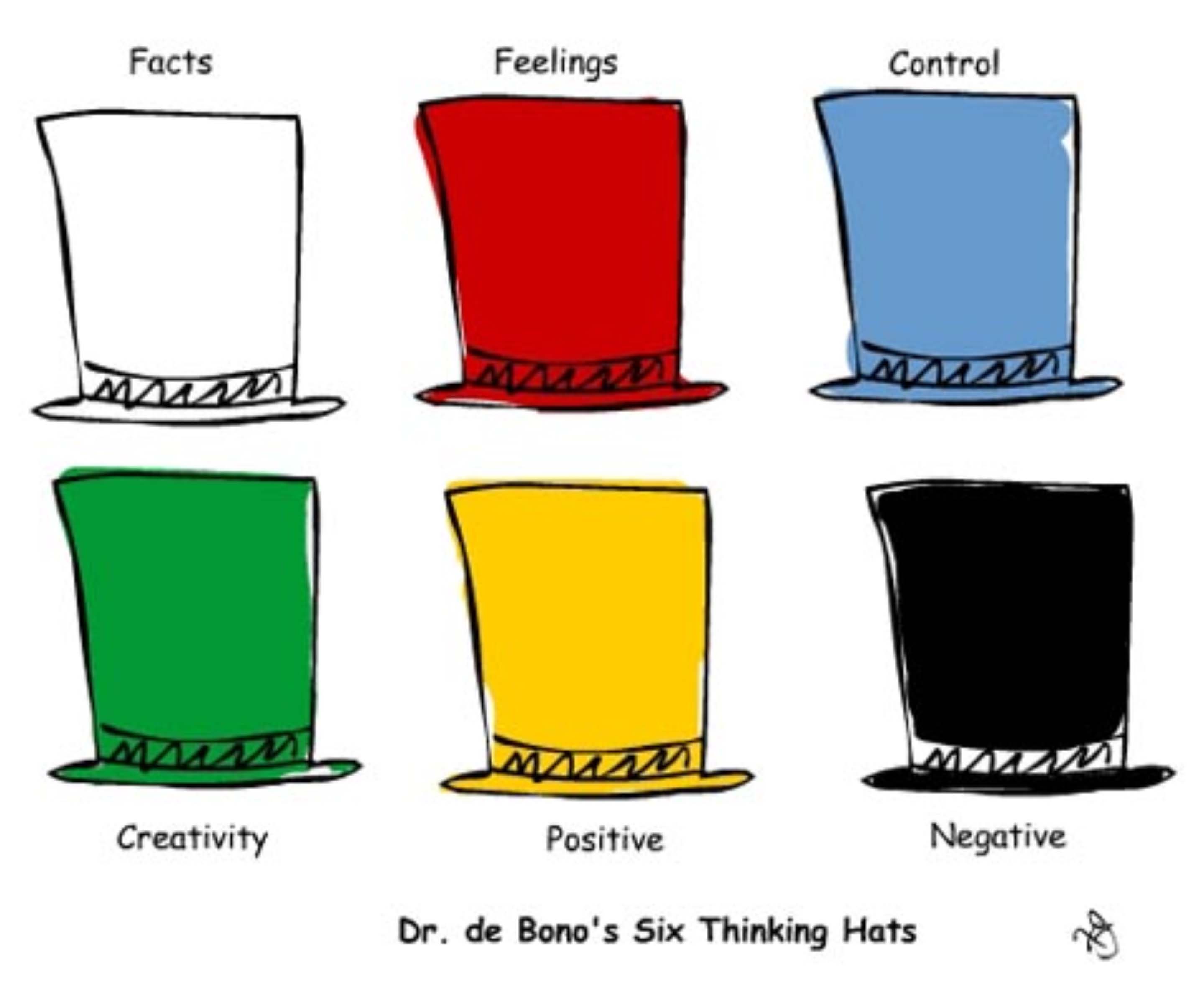













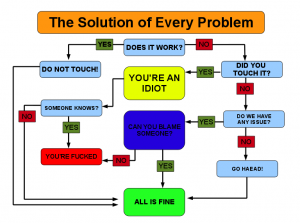



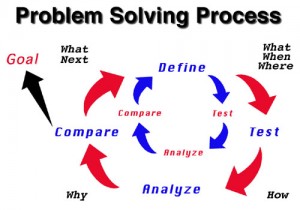



 Creativity Determines Quality of Life
Creativity Determines Quality of Life The Characteristics of a Creative Genius
The Characteristics of a Creative Genius Belief that there is No Failure, Only Feedback
Belief that there is No Failure, Only Feedback




